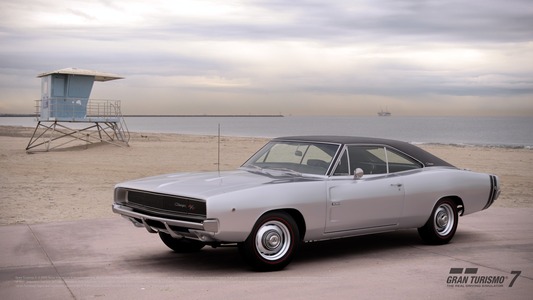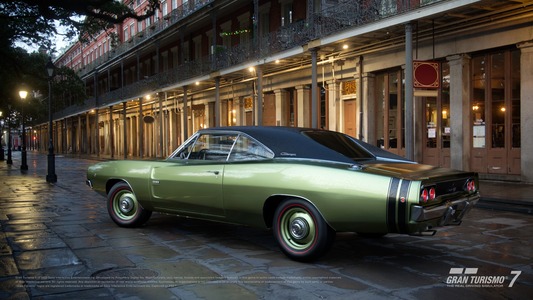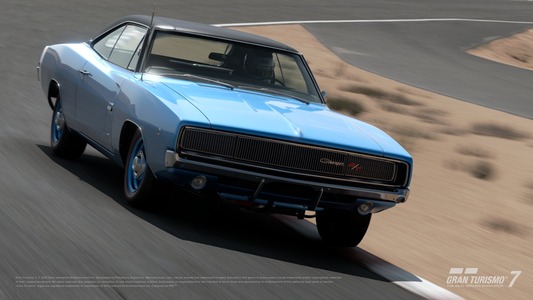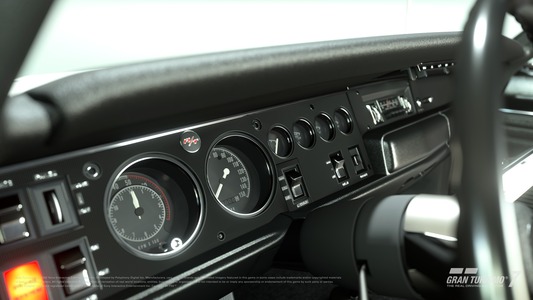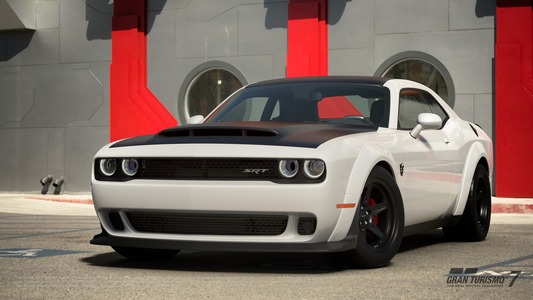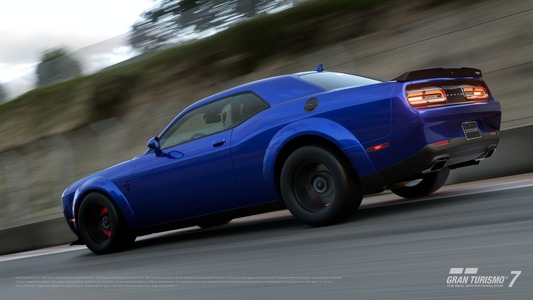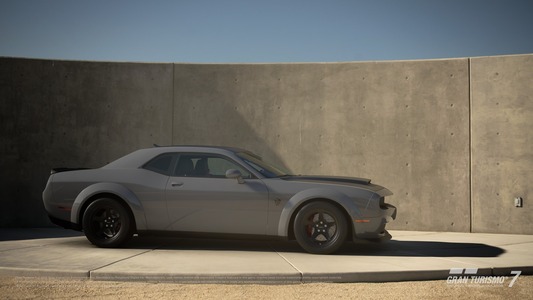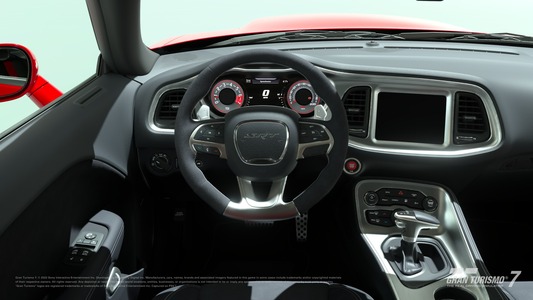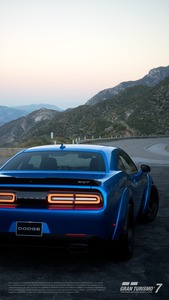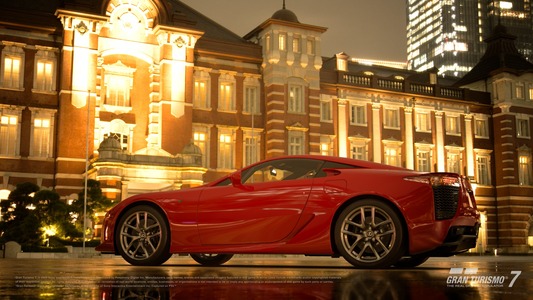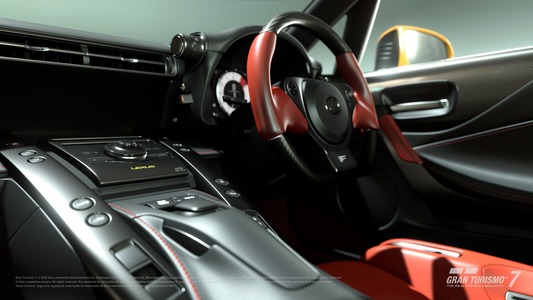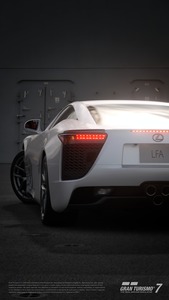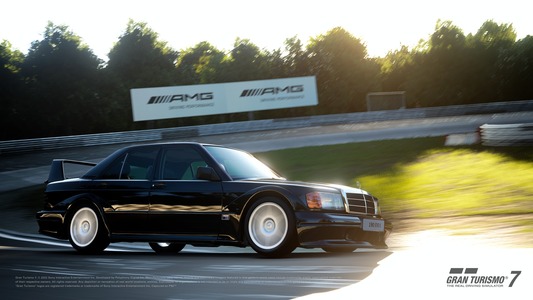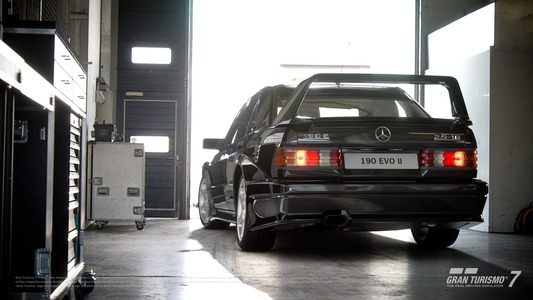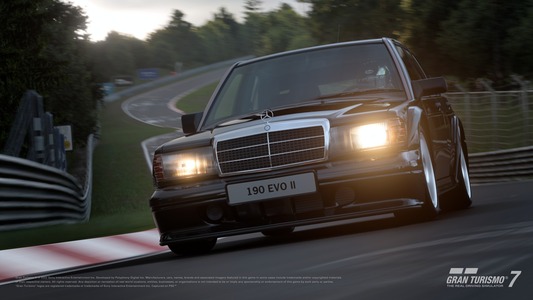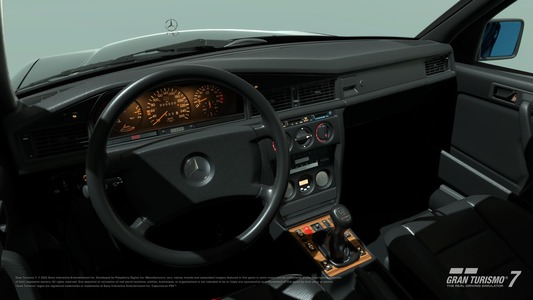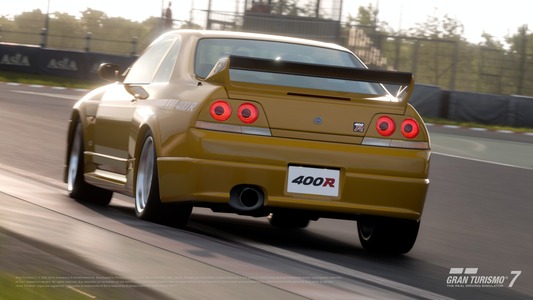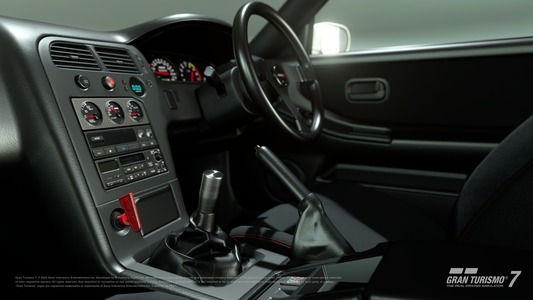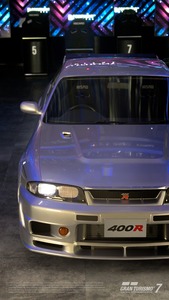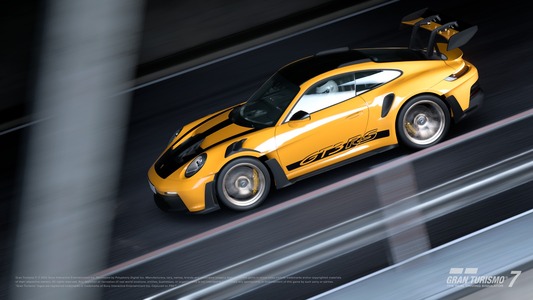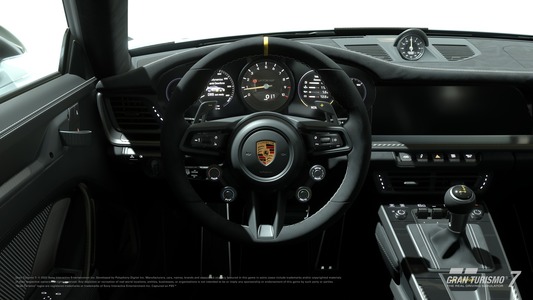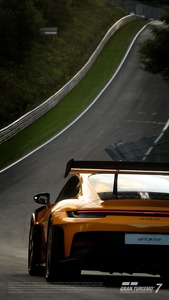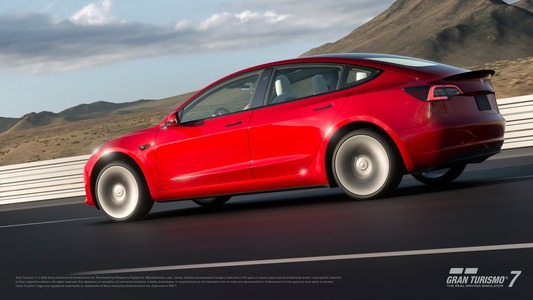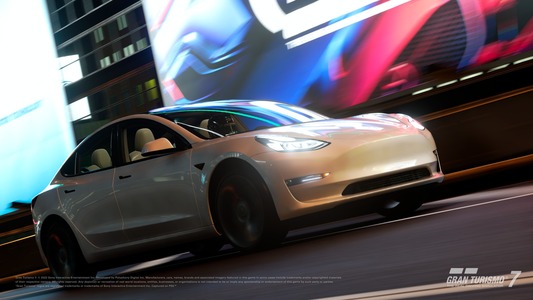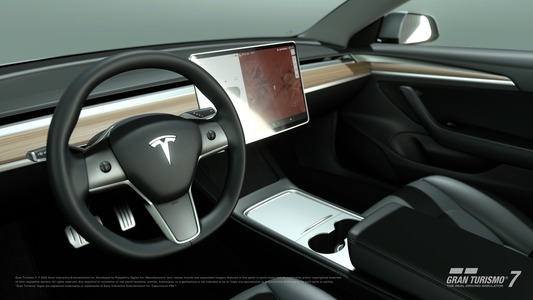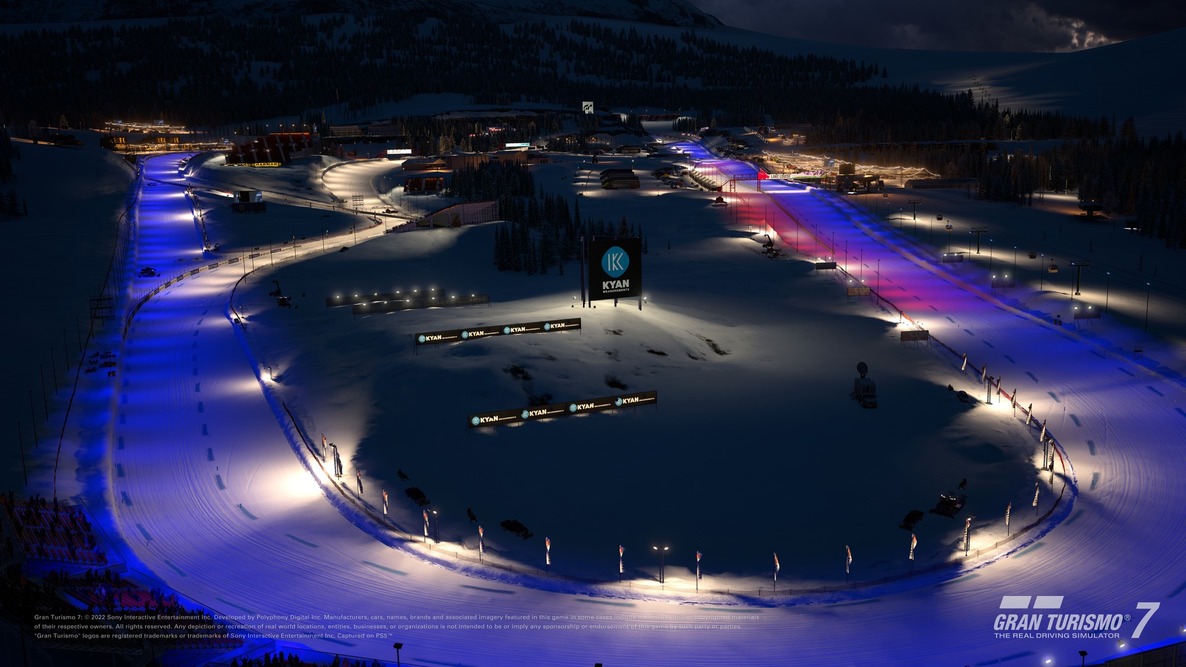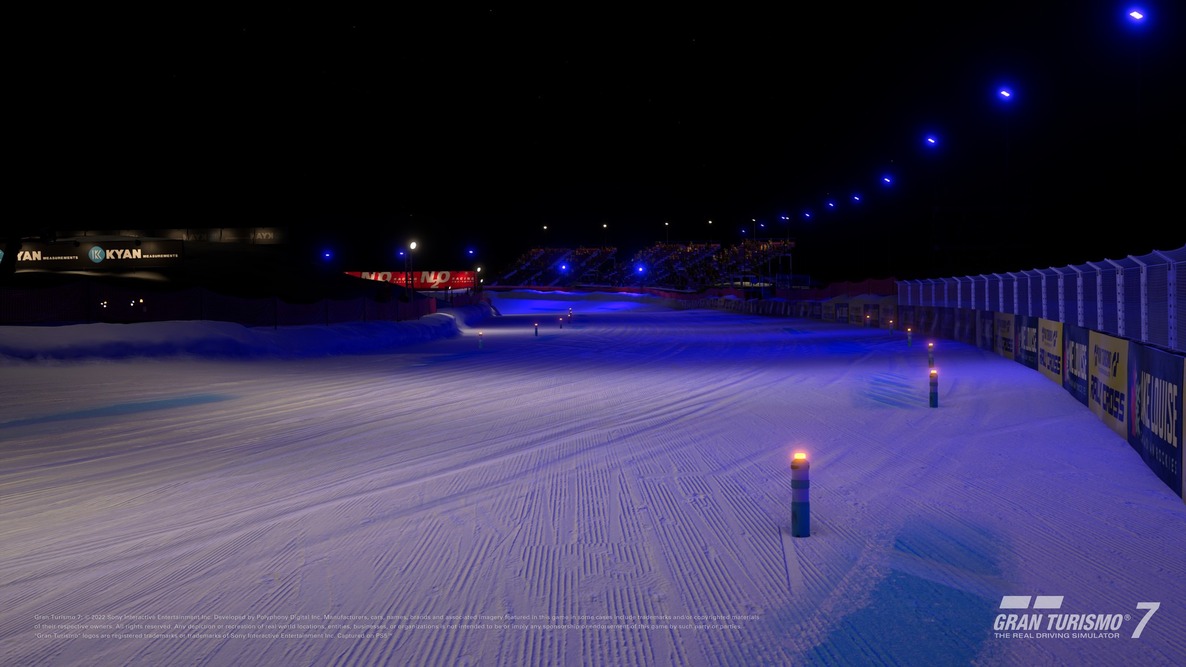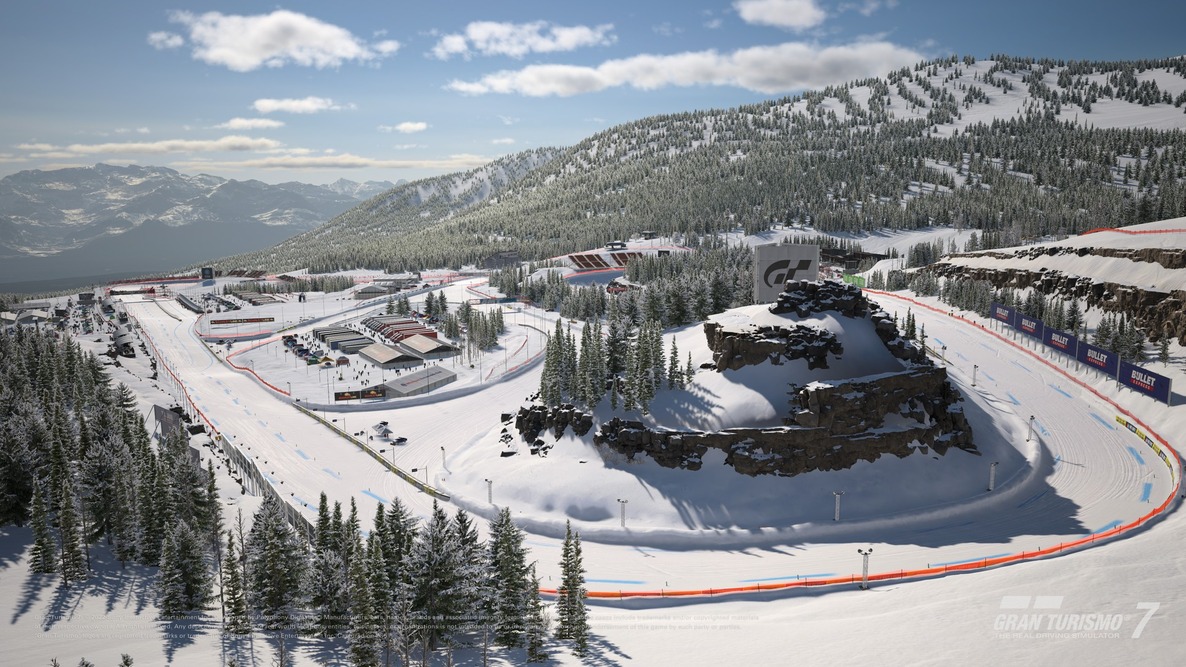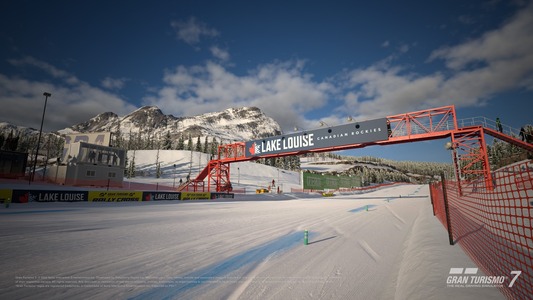New Cars and a Track for the "Spec II" Update
The "Spec II" update introduces seven new cars to the lineup as well as a long-awaited new track.
1. With the Spec II update, seven new modern and classic sports cars raise Gran Turismo 7's total lineup to 483 cars and 67 brands.
With the drop of the long-awaited "Spec II" update, Grand Turismo 7 now boasts an incredible collection of 483 car models hailing from a whopping 67 different brands! Along with these new entries, this epic lineup offers an extensive array of vehicles from every corner of the globe, spanning various eras and categories. Your dream car is just waiting for you to discover it, so pick your favorite and get driving!
Dodge Charger R/T 426 Hemi '68
A true 1960s muscle car, the envy of collectors everywhere.
Introduced by Chrysler in 1966, the Dodge Charger became a groundbreaking icon that would forever etch its name into the annals of American automotive history. This was a time when muscle cars were taking the nation by storm, and the Charger emerged as a true trailblazer in this thrilling era. The car was instantly recognizable by its elongated 2-door fastback silhouette, making it a statement of power, style, and attitude. But above all, the car was known for its power. Under its hood was a large displacement V-8 engine across all model grades. In 1968, the Charger received a minor facelift that further cemented its legendary status, but what truly set hearts racing was the introduction of the R/T (Road/Track) performance package, which brought an array of enhancements, including a sportier chassis, upgraded suspension, and superior brakes. But the pièce de résistance was the option to equip the engine with the monstrous 426 Hemi unit—a 7.0-liter powerhouse derived from NASCAR race engines. This made it the fastest model in the 1968 lineup.
Dodge Challenger SRT Demon '18
A Demon born to run the quarter-mile as fast as possible.
In 2008, Dodge unveiled the third-generation Challenger, as a true heir to the throne of the original muscle car masterpiece. Then, a few years down the line, the SRT Hellcat took the automotive world by storm in 2015, setting a new standard for performance. But this was just the beginning, as Dodge introduced the SRT Demon in 2018, engineered for a singular purpose: to conquer the drag strip. The SRT Demon's engine, a close relative of the Hellcat, underwent a transformation that allowed it to sprint from zero to 62 mph in a mere 2.3 seconds and reach the quarter-mile mark in just 9.65 seconds. Dodge deleted all unnecessary items from the car to save weight, including its passenger and rear seats, embracing a pure drag strip setup. Of course, for those seeking a touch of comfort, the company offered them as optional extras. Such was the Demon's ferocity that it ran afoul of the NHRA (National Hot Rod Association), which deemed it too fast to compete in stock condition without a roll cage or parachute. The SRT Demon, whose production run was limited to 3,300 units, is destined for legendary status in the annals of Dodge history.
Lexus LFA '10
An ultra high-tech sports car with exotic-car performance and mass-production quality.
Two decades before Japan's automotive prowess took the world by storm, Toyota introduced a history-altering sports car called the 2000GT, a technological marvel of the 1960s. Fast forward to the 21st century, and the company's premium brand, Lexus, carried on the torch of innovation with the stunning LFA. The 2-seat super sports car featured a transaxle layout with a rear-mounted radiator, coupled with a dry-sump lubrication system. This resulted in a flawlessly balanced sports car, boasting a front-to-rear weight distribution of 48:52 and an amazingly low center of gravity. With the ability to sprint from zero to 62.1 mph in a mere 3.7 seconds and reach a top speed of 201.9 mph, its performance was on par with the best exotic cars from Italy. With a production run of only 500 units, the LFA is destined to be a classic and serves as a testament to Lexus's commitment to pushing the boundaries of what's possible.
Mercedes-Benz 190 E 2.5-16 Evolution II '91
Born from touring-car racing came the ultimate evolution of the 190 E.
In the early 1980s, Mercedes-Benz made a triumphant return to the world of motorsports, ending a long hiatus from the racing scene. Its ambitious endeavor led to the creation of the sports model called the 190 E 2.3-16. Introduced in 1983, the car came equipped with a familiar engine, which was based on the 2.3-liter SOHC inline-4 Mercedes-Benz already had in production. However, the engineers replaced the head with a 16-valve DOHC setup, and the entire powerplant was fine-tuned by the legendary F1 virtuosos at Cosworth. The result was a maximum power of 185 ps and peak torque of 23.1 kgfm. With this high-performance engine, the 190 E 2.3-16 made its racing debut in the prestigious Deutsche Tourenwagen Meisterschaft (DTM) in 1986, where it impressed from the get-go. The car saw several updates in 1988 and 1989, further fine-tuning its performance and solidifying its reputation as a force to be reckoned with on the track. In 1990, the ultimate incarnation of this now-legendary model emerged: the 190 E 2.3-16 Evolution II. A mere 500 of these cars were produced, but they made a resounding impact on the racing world. In 1992, the 190 E 2.3-16 Evolution II took the DTM by storm, leaving no doubt that it was the ultimate 190 E, thanks to its remarkable power, precision engineering, and racing pedigre.
NISMO 400R '95
With 394.5 bhp and an extremely limited production run, the 400R became the ultimate R33 GT-R.
In the automotive world, the year 1996 was marked by innovation and a departure from traditional norms. Japan, a land known for its strict power limits on vehicles, saw the emergence of the Nissan 400R, a fully tuned sports car that defied conventions. Leaving fans awestruck was the incredible output of the car, but also its listed price tag of 12,000,000 yen, a substantial sum in its time, especially when you considered that it was triple the base price of a R33 Skyline GT-R. Under the hood was a modified version of the renowned RB26DETT engine, known as the RBX-GT2. In a country where regulations capped power at 280 ps, the 400R's maximum output was raised to 400 ps, and the engine meticulously tuned to deliver high torque at low RPMs. This fine-tuning made the 400R a more manageable beast than its stock counterpart. However, power-hungry drivers were not forgotten, as the installation of a twin-plate clutch unit allowed them to tap into the engine's higher revs. A lightweight carbon-fiber propeller shaft was integrated to optimize weight distribution and enhance agility. To ensure exceptional handling, the car came with a specialized suspension kit featuring Bilstein dampers, front and rear reinforced stabilizers, and upgraded bushings was put in place. These enhancements transformed the 400R into a finely tuned instrument, perfectly balanced between power and precision.
Porsche 911 GT3 RS (992) '22
A hyper-performance street car packed with race car features.
Introduced in the summer of 2022, the Porsche 911 GT3 RS (992) emerged as a ferocious street machine, infusing the formidable aerodynamics of the 911 GT3 R, a bona fide race car, with the road-going 992. The car's most conspicuous feature was its swan-neck mounted rear wing, the largest ever to grace a production Porsche. And it wasn't just for show because this wing boasted an F1-style DRS (Drag Reduction System) that, under specific conditions, let you flatten it at the push of a button, reducing wind resistance and propelling the car to higher speeds. And, when you needed to slow down, the front adjustable active diffuser stepped in as an air brake, enhancing the car's braking prowess. Under the hood was the Porsche 911 GT3 RS' naturally-aspirated 4.0-liter flat-6, which came mated to a 7-speed PDK transmission. It delivered 525 horsepower, five more hp than its predecessor, but slightly less torque (0.51 kgm) at 47.42 kgm. Still, the 911 GT3 RS was able to sprint to 100 km/h in 3.2 seconds and reach a top speed of 296 km/h, which made it truly elite among the high-performance sports cars of its day!
Tesla Model 3 Performance '23
The bestseller from the company that changed the EV market .
As part of Tesla's efforts that revolutionized the electric-vehicle genre, the Model 3 made its grand entrance in 2016, captivating the market with its sporty 5-door hatchback design. The car's cabin possessed minimalist charm, where instead of switches and buttons, nearly all vehicle functions—from the climate management to Autopilot—were operated on a sleek 15-inch touchscreen. The top-tier performer in the Model 3 family was the Performance Dual Motor AWD model that graced the lineup until 2023. The all-wheel drive system here deployed an electric motor at both the front and rear axles. While the exact power figures remain a well-guarded secret, the car's performance spoke for themselves, able to register a zero-to-100-km/h time of 3.3 seconds and reach a top speed of an astounding 261 km/h!
2. The new snow track, Lake Louise in the Canadian Rockies, raises the total track count in GT7 to 116 layouts across 38 locations.
Lake Louise, a completely new original course designed around a fictional ski resort located in the foothills of the Canadian Rocky Mountain Parks World Heritage Site, features three challenging layouts: Long Track, the Short Track, and the Tri-Oval. Each of these courses can be run at night, and all of them require snow tires. With the addition of Lake Louise, the track lineup of Gran Turismo 7 now consists of 116 layouts across 38 locations.
Lake Louise Long Track
Track Length, 3,694 m. Elevation Difference, 78 m. Number of Corners, 11. Longest Straight, 765 m.
As its name implies, Lake Louise Long Track is the longest of the three layouts. This technical course starts with a series of mid- to high-speed corners, with the latter half of the track characterized by tighter corners. You'll need choose cars that possess the stability to take on the high-speed areas while still able to the tighter turns. The bank angles change drastically in the late stages of the track, resulting in near-blind corners, so make sure you become familiar with the track's intricacies and formulate an effective plan before going all out.
Lake Louise Short Track
Track Length, 2,577 m. Elevation Difference, 63 m. Number of Corners, 7. Longest Straight, 765 m.
A clever shortcut emerges in this variation just after conquering Turn 1 on the expansive Long Track. There are a series of winding mid-to-high speed corners, and while it may not be the most challenging layout on paper, underestimate it at your own peril, as a solitary error can translate into significant time loss. The key here will be how well you can maintain your speed through the consecutive corners of the mid-section.
Lake Louise Tri-Oval
Track Length. 3,068 m. Elevation Difference, 78 m. Number of Corners, 3. Longest Straight, 1,184 m.
The Tri-Oval is a simple layout with just three corners. It has the longest straights of all three variants, and although the corners are few, each one is relatively tight so controlling your speed with braking is important. You’ll also need to be careful when going wheel-to-wheel with other cars because these corners invite collisions.
Try snow racing at Lake Louise
With the addition of the Lake Louise track comes three new race events in World Circuits: Pickup Truck Race, Japanese 4WD Challenge, and World Rally Challenge Gr.B. So, throw some snow tires on your car and get ready for a wild kind of racing that you just can't experience on tarmac tracks


